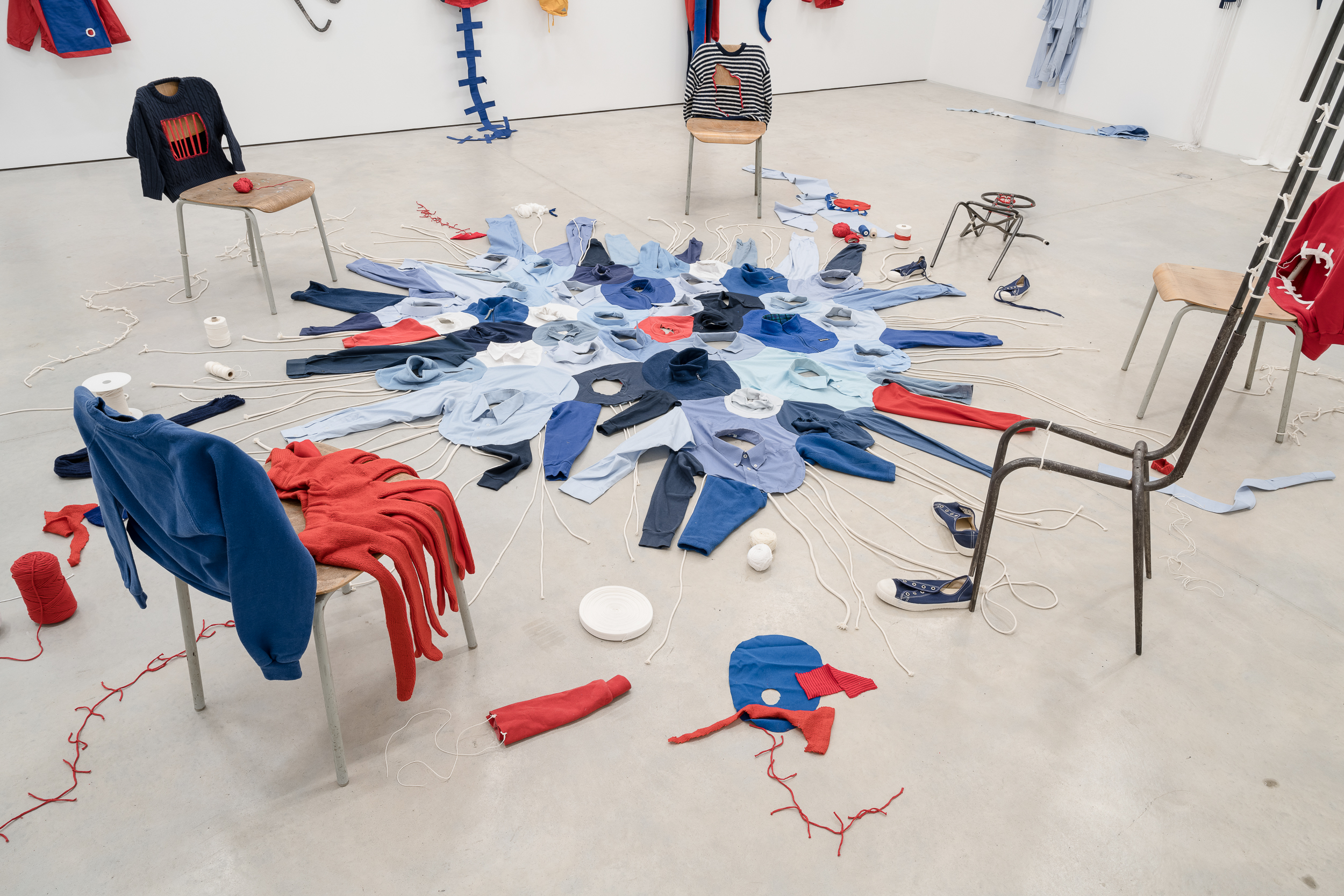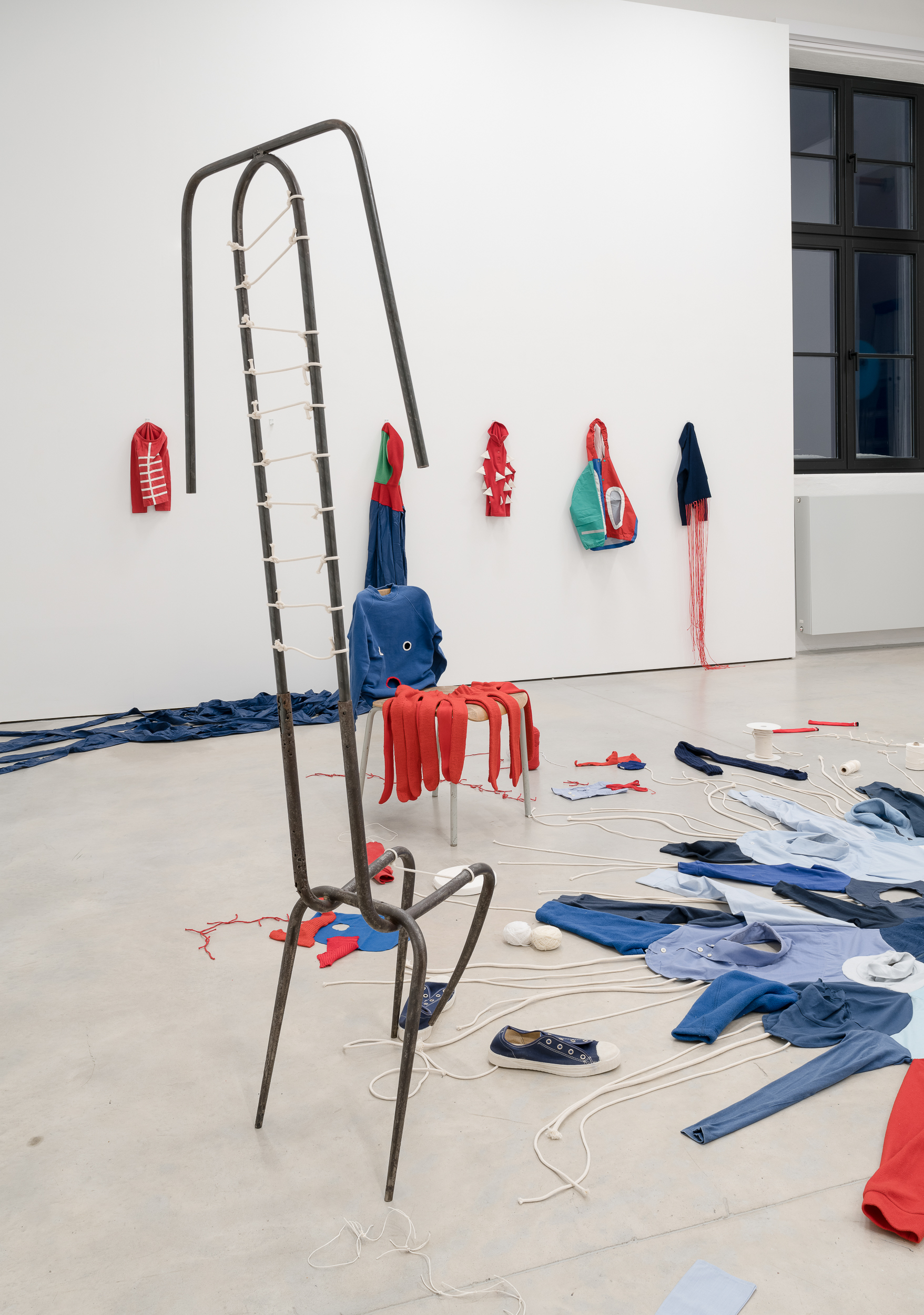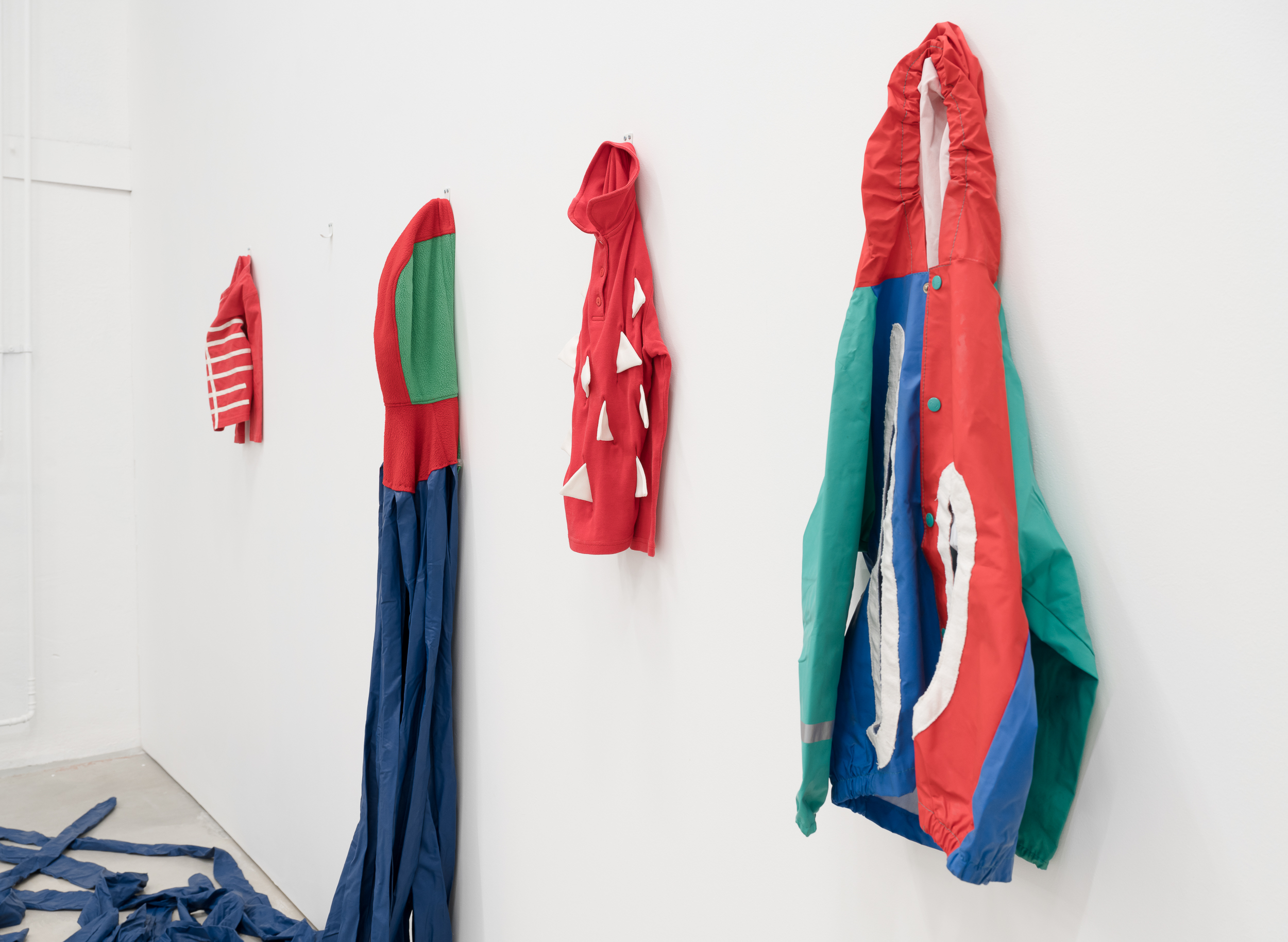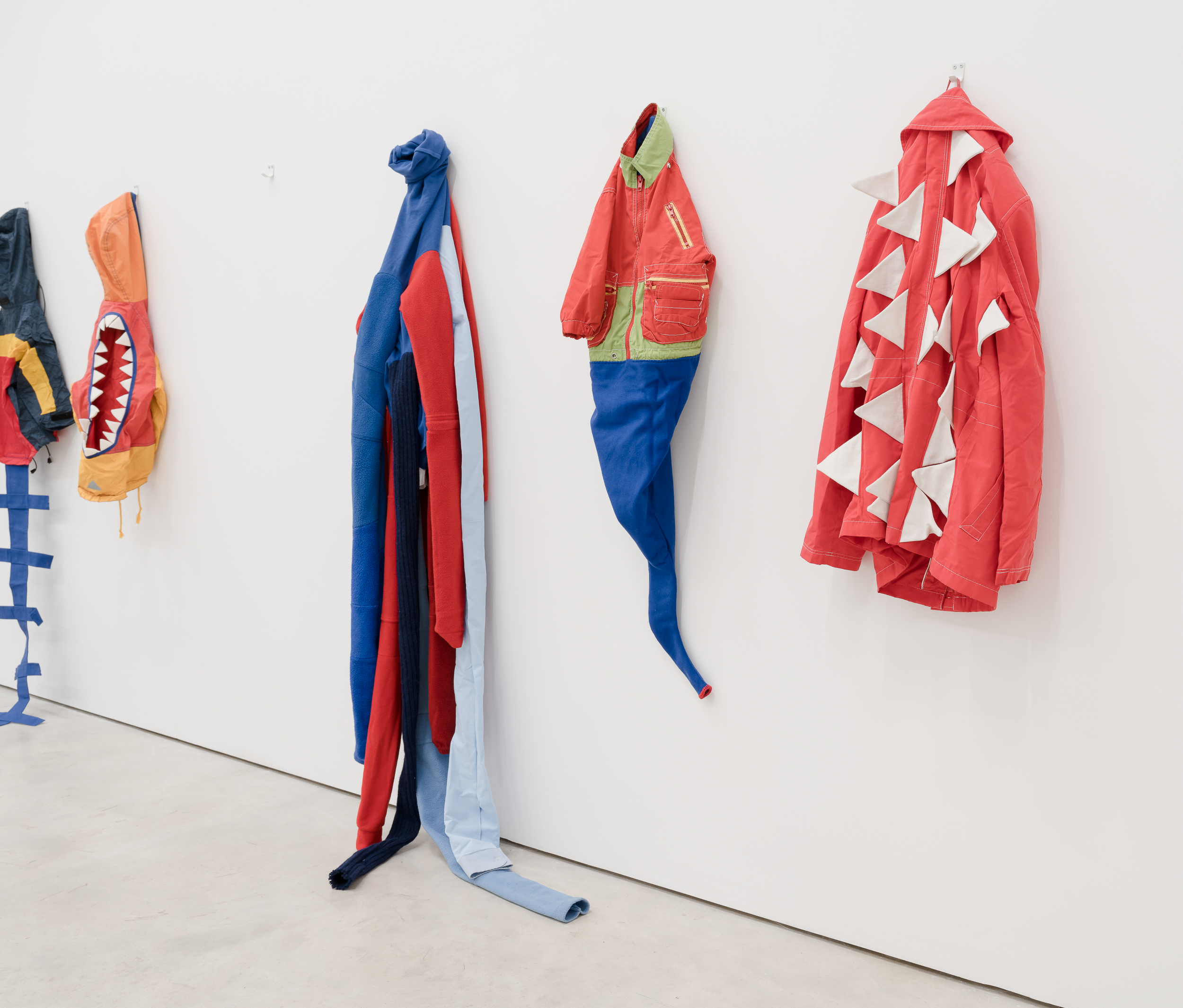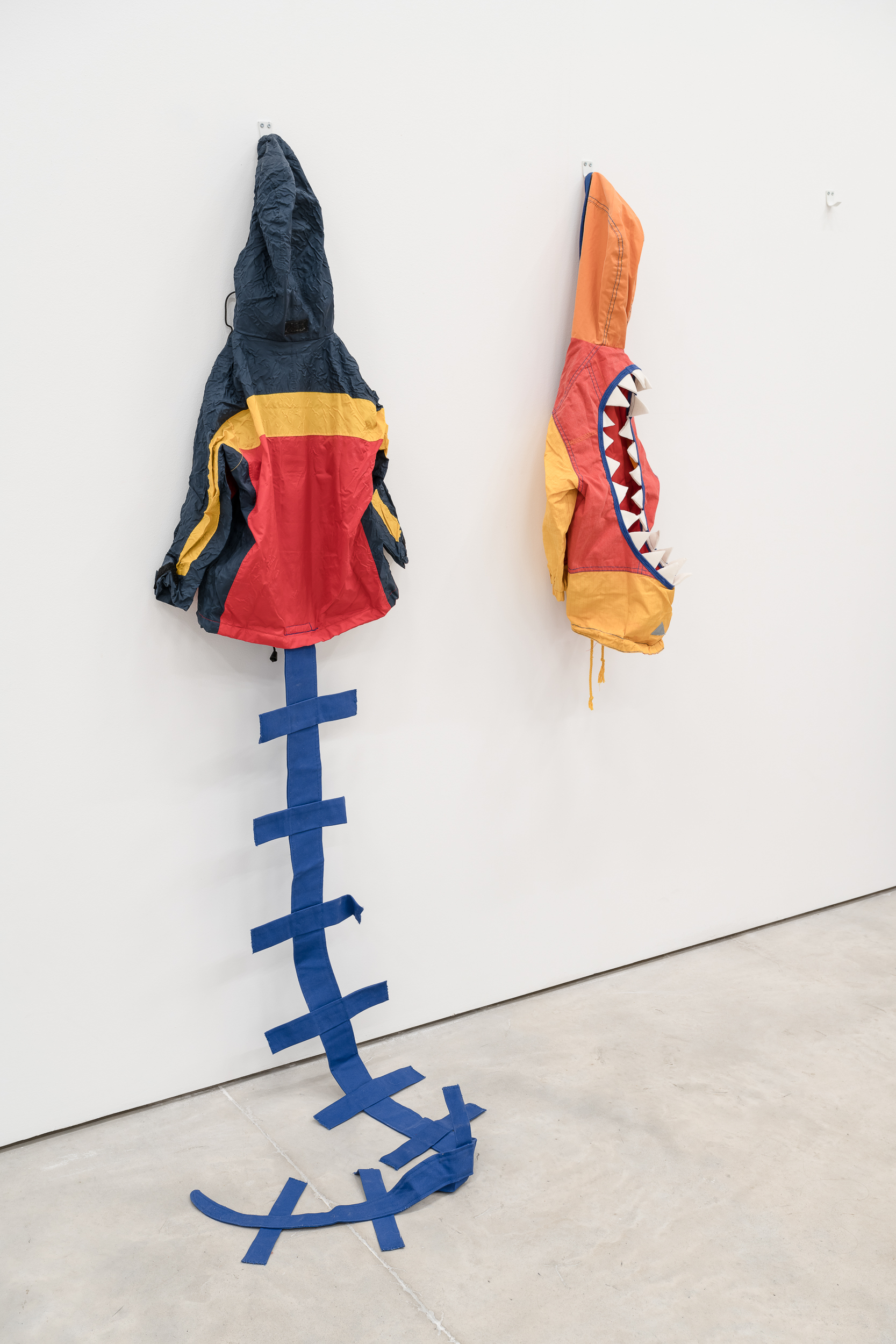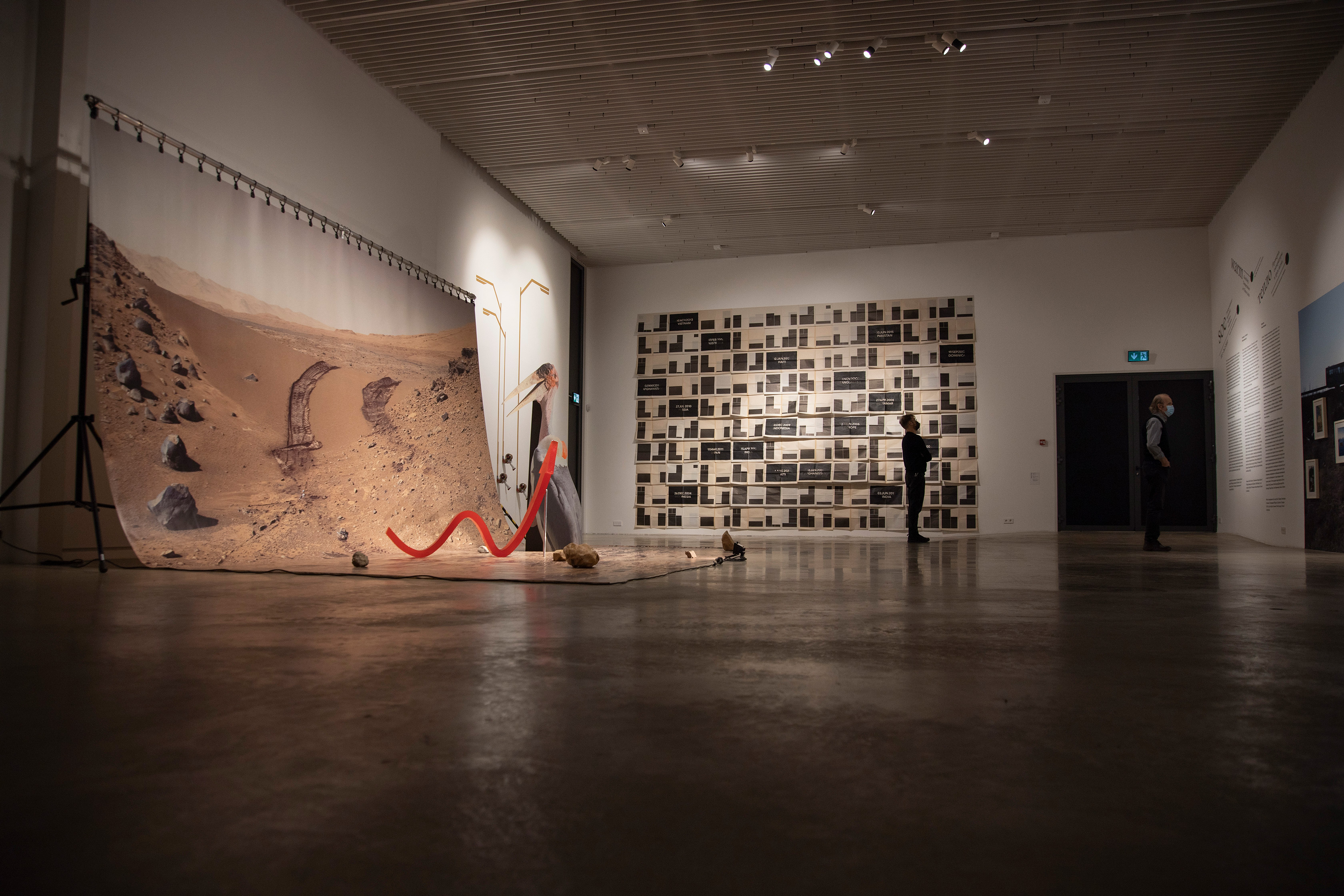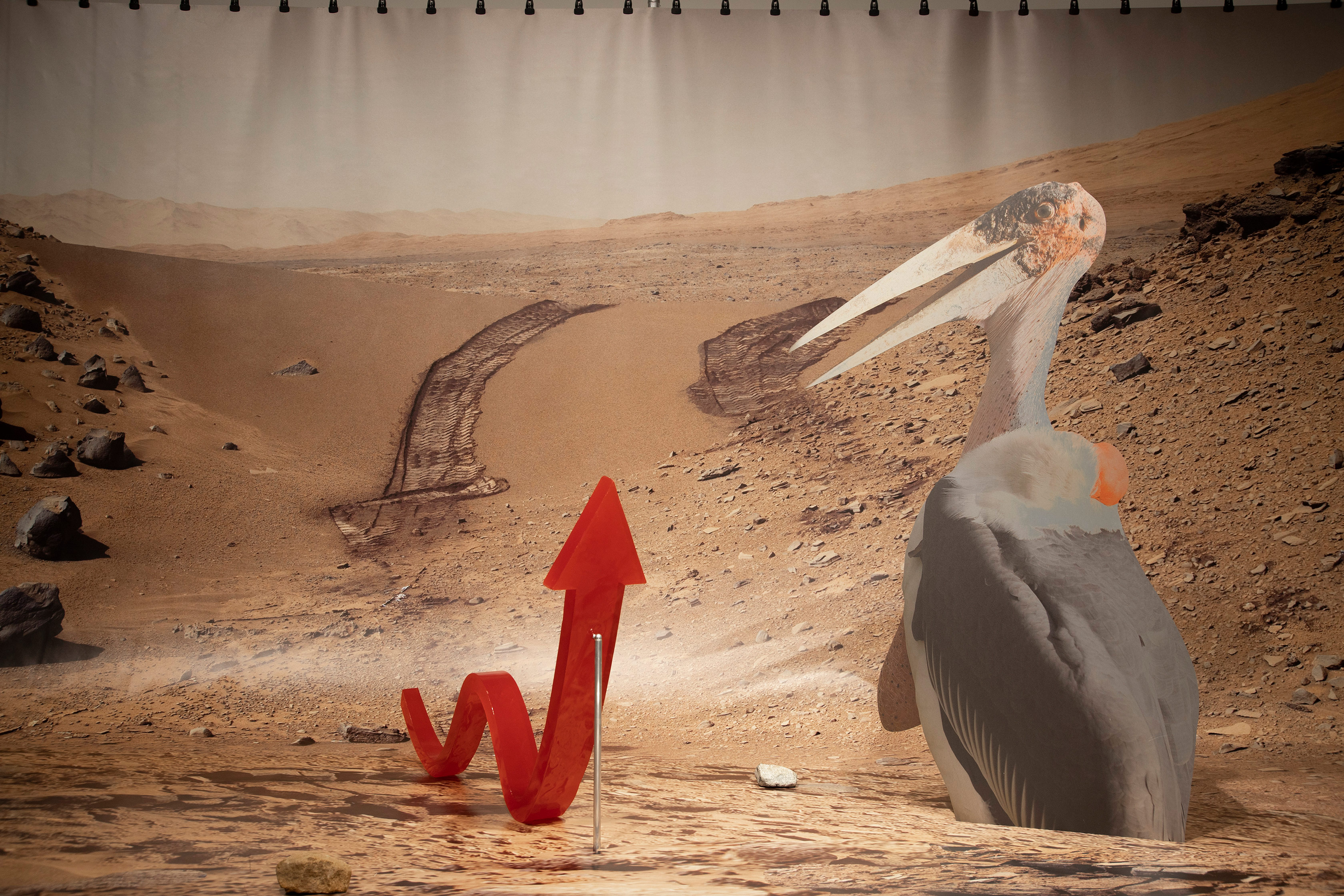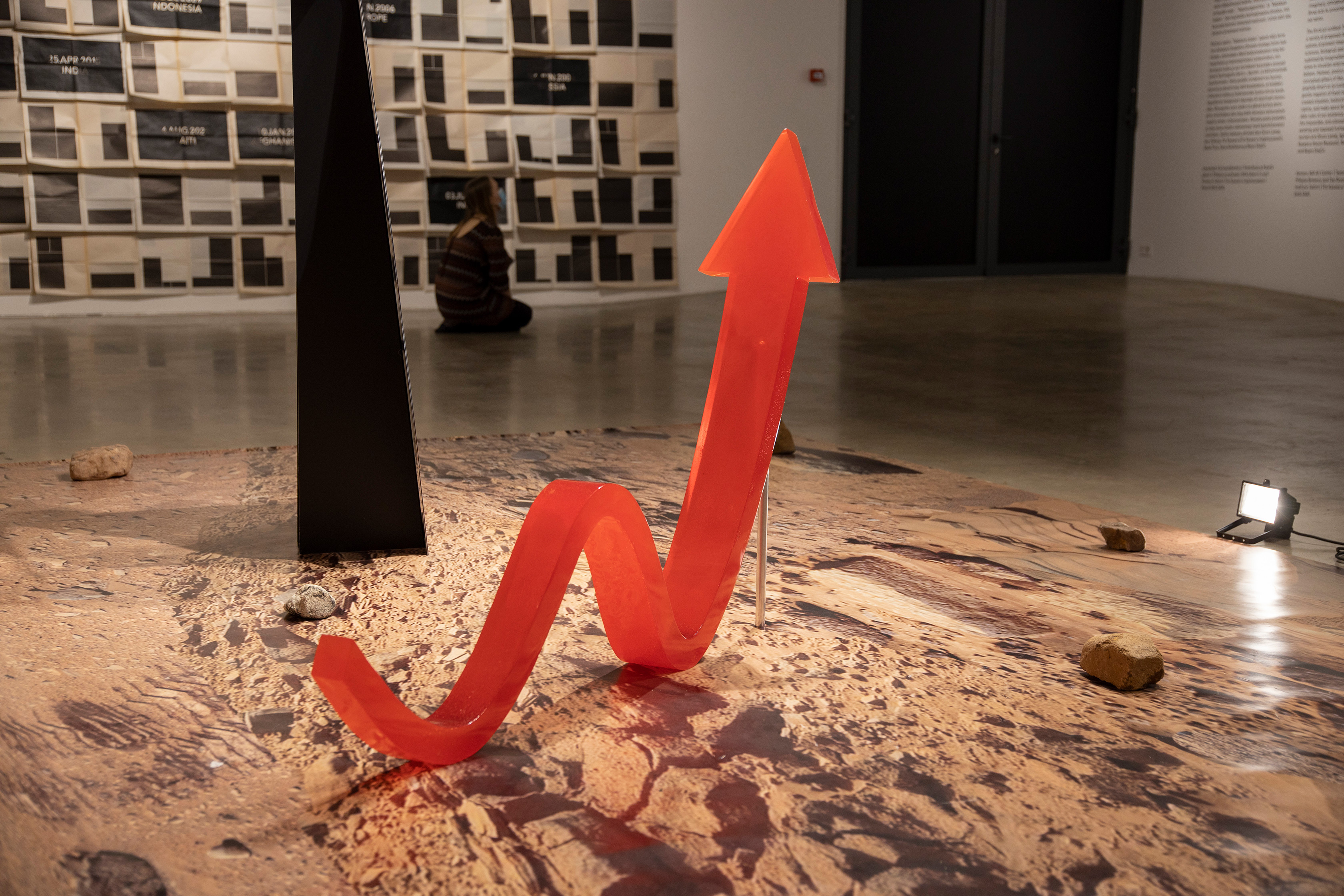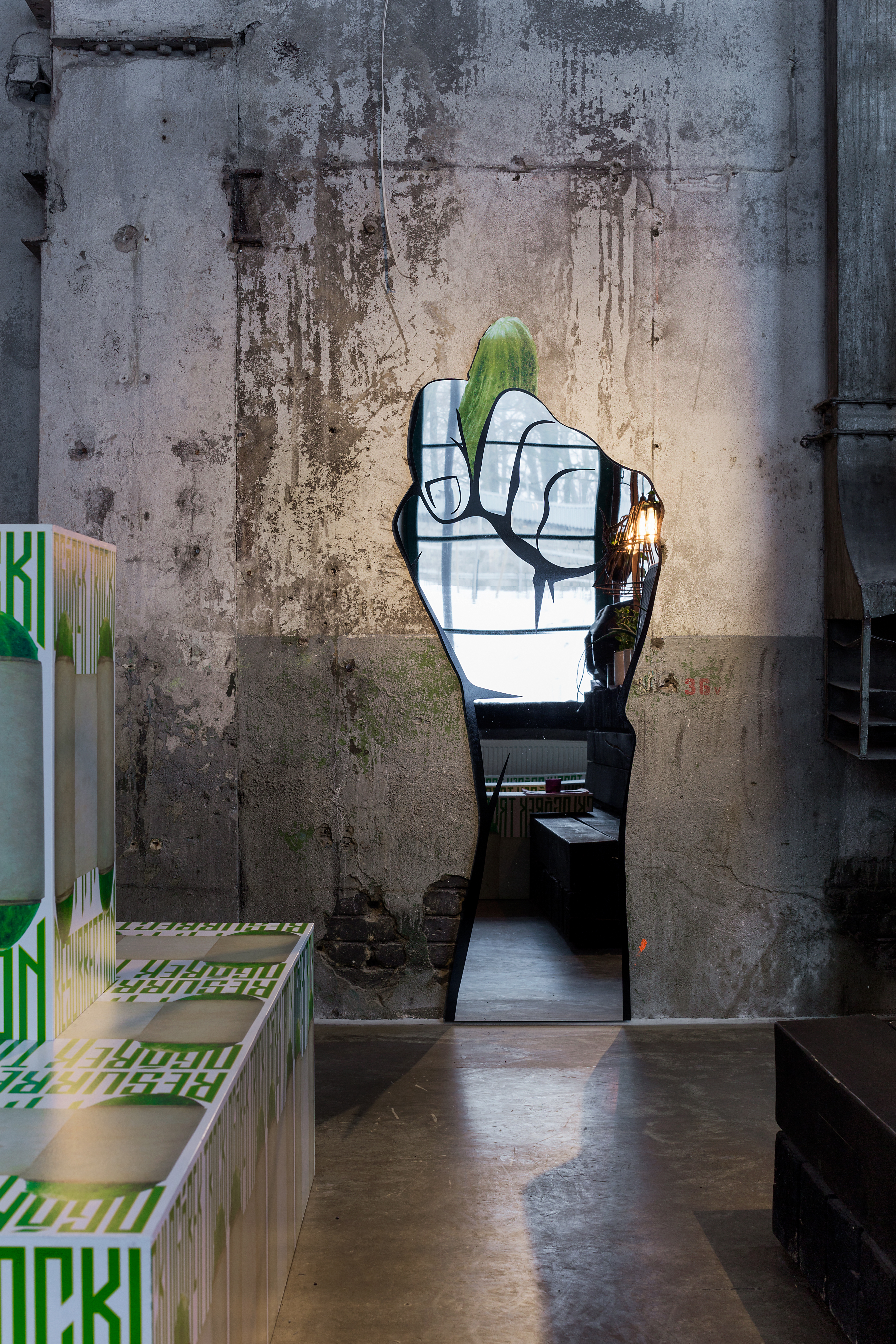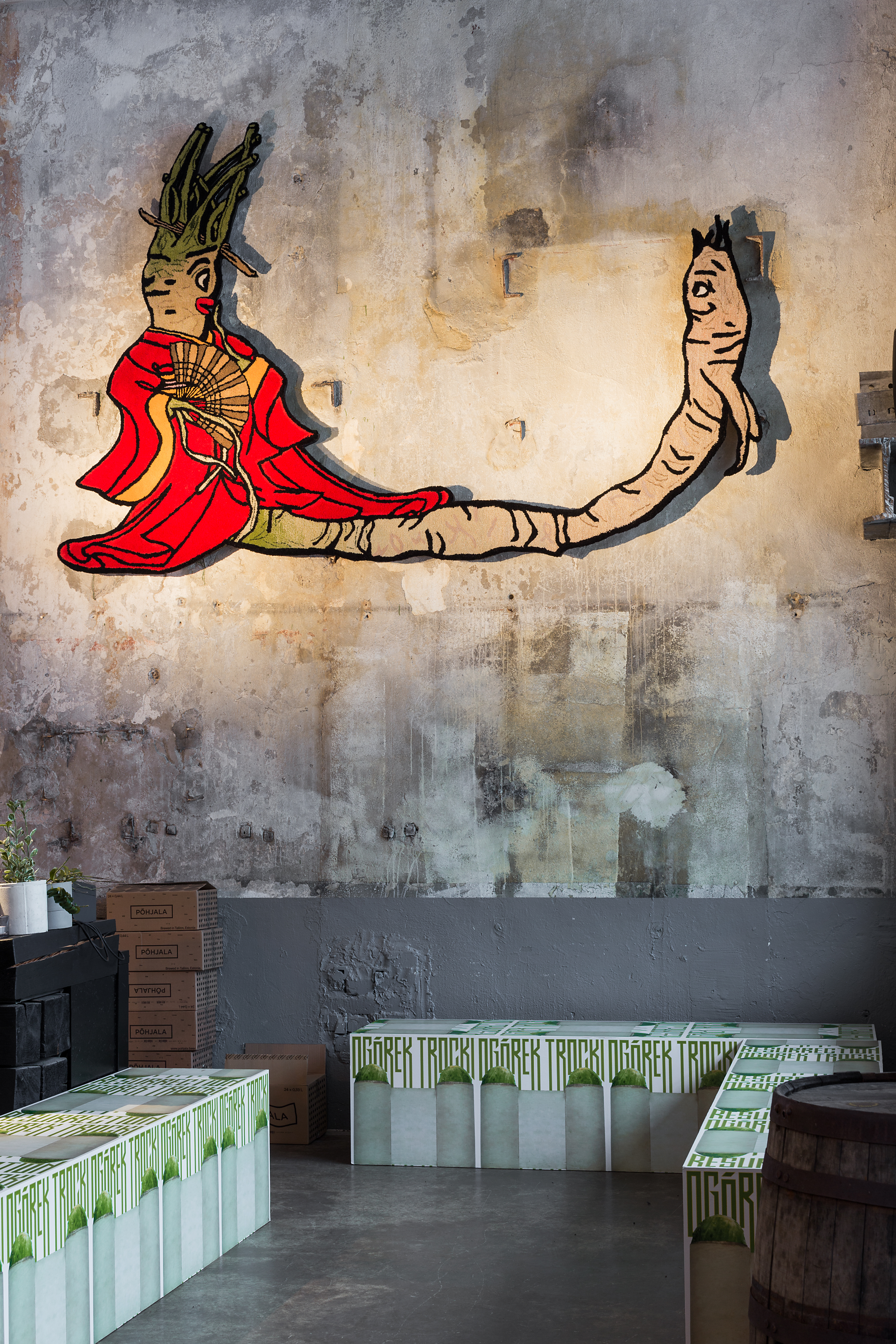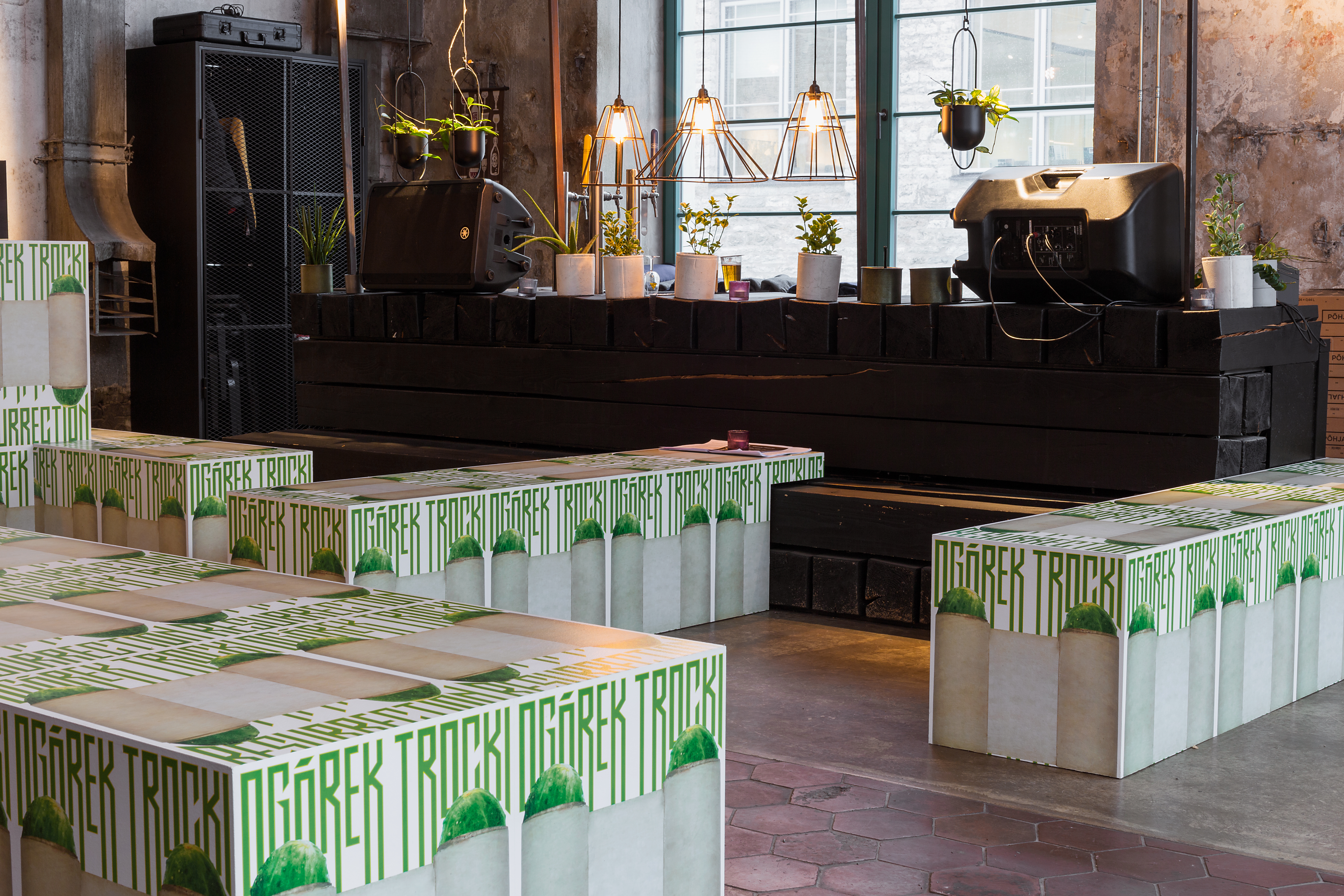Artist: ArtLeaks | Jasmina Cibic | Hubert Czerepok | Agnes Denes | Igor Eškinja | Oxana Gourinovitch | Ferenc Gróf | Flo Kasearu | Eva Koťátková | Volodymyr Kuznetsov | Irena Lagator | Olson Lamaj | Marko Mäetamm | Alexander Manuiloff | Dóra Maurer | Raul Meel | Katja Novitskova | Dan Perjovschi | Géza Perneczky | Nada Prlja | Kaisa Puustak | Driton Selmani | Slavs and Tatars | Société Réaliste | Bojan Stojčić | Endre Tót
Exhibition title: Warm. Checking Temperature in Three Acts
Venue: Kai Art Center | Temnikova & Kasela Gallery | Põhjala Brewery | EKA Gallery | Liszt Institute Tallinn | Flo Kasearu House Museum | Kanuti Gildi Saal
Curator: Róna Kopeczky
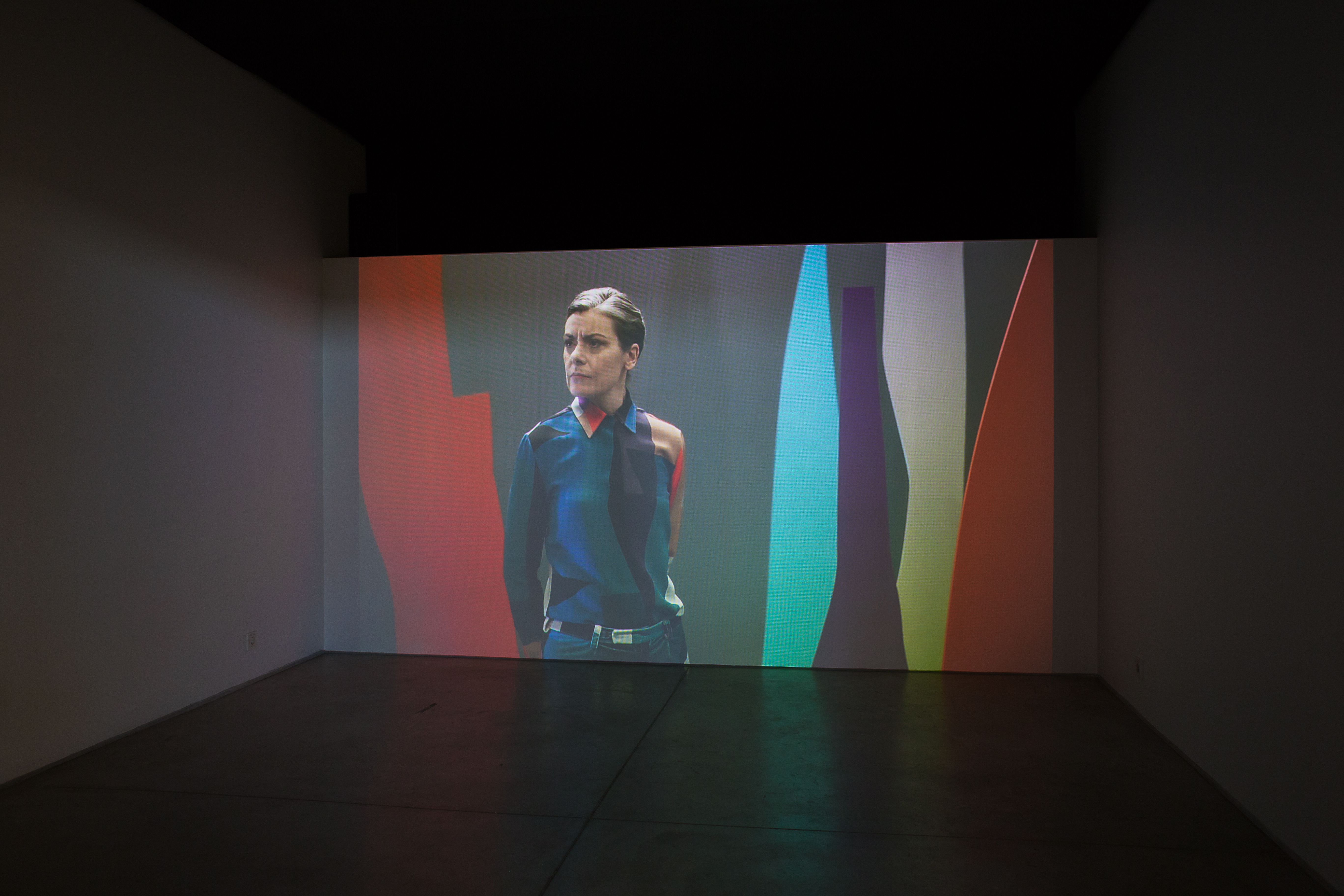
WARM – CHECKING TEMPERATURE IN THREE ACTS is a multi-part exhibition that primarily gives thought to the radical political, cultural and social turns that affect Central and Eastern Europe, but it also inscribes these changes in a global perspective through the lens of universal absurdity. The project gives voice to contemporary artists based in or originating from the Central and Eastern European region who reflect boldly and critically on burning issues such as the rise of far-right politics, globally misplaced priorities, the collapse of democracies, the shrinking of freedom – in both life and art – and the general sense of conditioned fear and hostility prevailing today.
The title reflects more precisely on the mechanisms through which positive notions shift in our interpretation of the negative realm and become associated with different, contradictory contents depending on the new contexts or situations in which they are used. More concretely, how the originally positive signification of warm – an agreeable feeling, the sense of a fairly or comfortably high temperature, and a behaviour showing enthusiasm, affection or kindness – becomes a warning sign of political turmoil, social irritation, symptoms of climate change or global pandemic, and therefore a signal of both natural and social global instability. In meeting this shift of signification that echoes the misleading phenomenon of general disinformation experienced around the world, Warm aims first of all to be a contemporary reflection on the fundamentally absurd global condition and on the dissonances of the human condition. It also looks to reflect on the hardships faced by contemporary artists, and the conceptual as well as visual answers they seek to soothe the tension and anxiety arising from our critically contradictory times. Their challenge – and ours too – is to bear the absurd reality with dignity and responsibility, by avoiding easy solutions and comforting illusions, attacking comfortable certainties, confronting difficulties on a path of survival through resilience or transformation, finding a way to create new meanings and striving for the freedom of art and the liberation of self.
Inviting artists from the regional contemporary art scene with existing works and new commissions, WARM comprises three intertwined cycles entitled THE NATION LOVES IT, PICKLE POLITICS and SCIENCE OF FREEDOM, which refer to artworks included in the exhibition – Jasmina Cibic: The Nation Loves It; Slavs and Tatars: Pickle Politics – or are quotations from artists – Joseph Beuys: “To make people free is the aim of art, therefore art for me is the science of freedom.”[1] The imaginary, conceptual theatre play that embraces these three acts is conceived as dramatic and intensifying narration. It articulates around the spectacles of absurdity with the intention of dissecting, appropriating and distorting them, but also to playfully propose humour and derision as an intellectual antidote or strategy, an imagined alternative that builds on visionary defiance or poetic escapism.
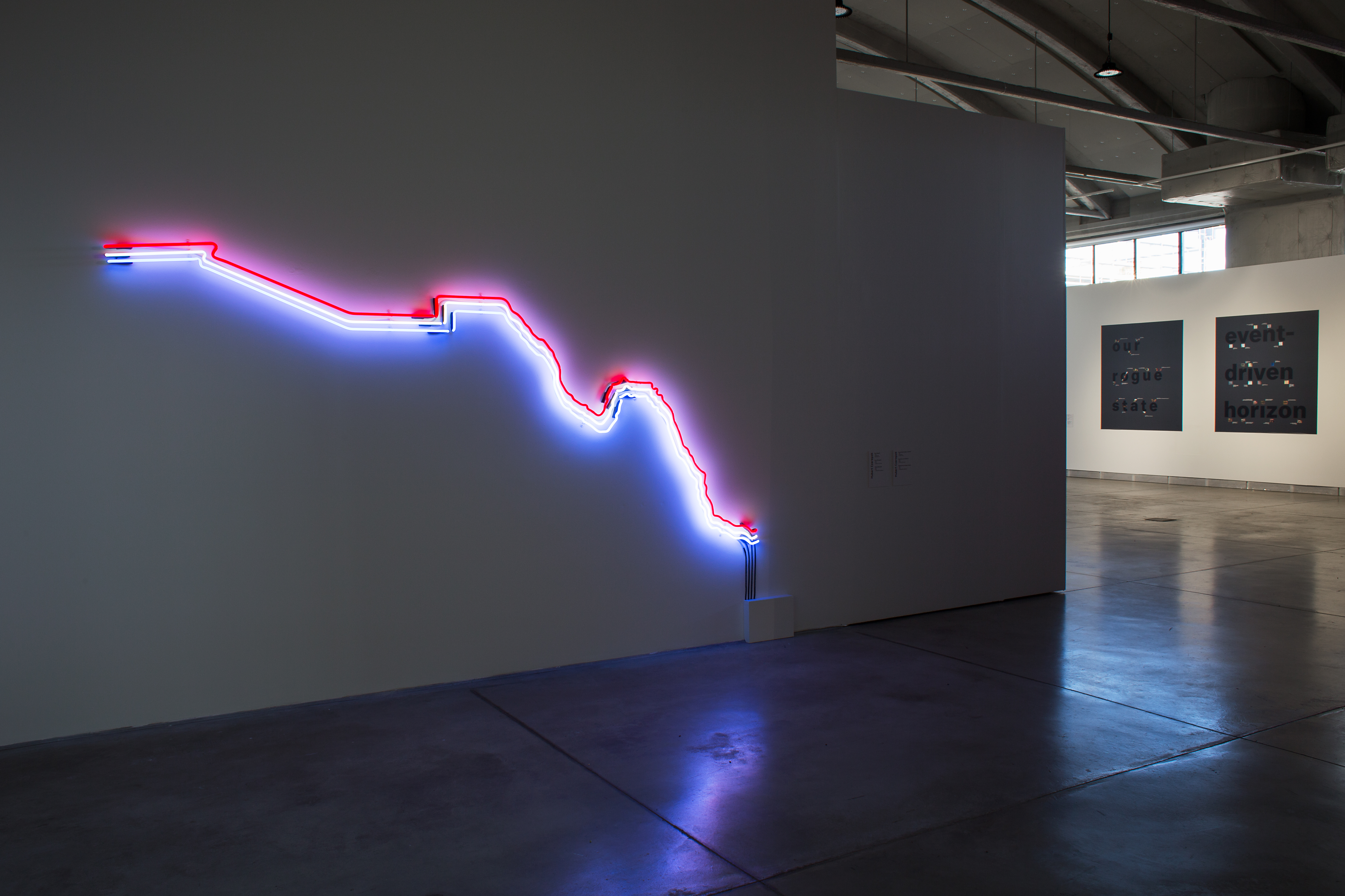
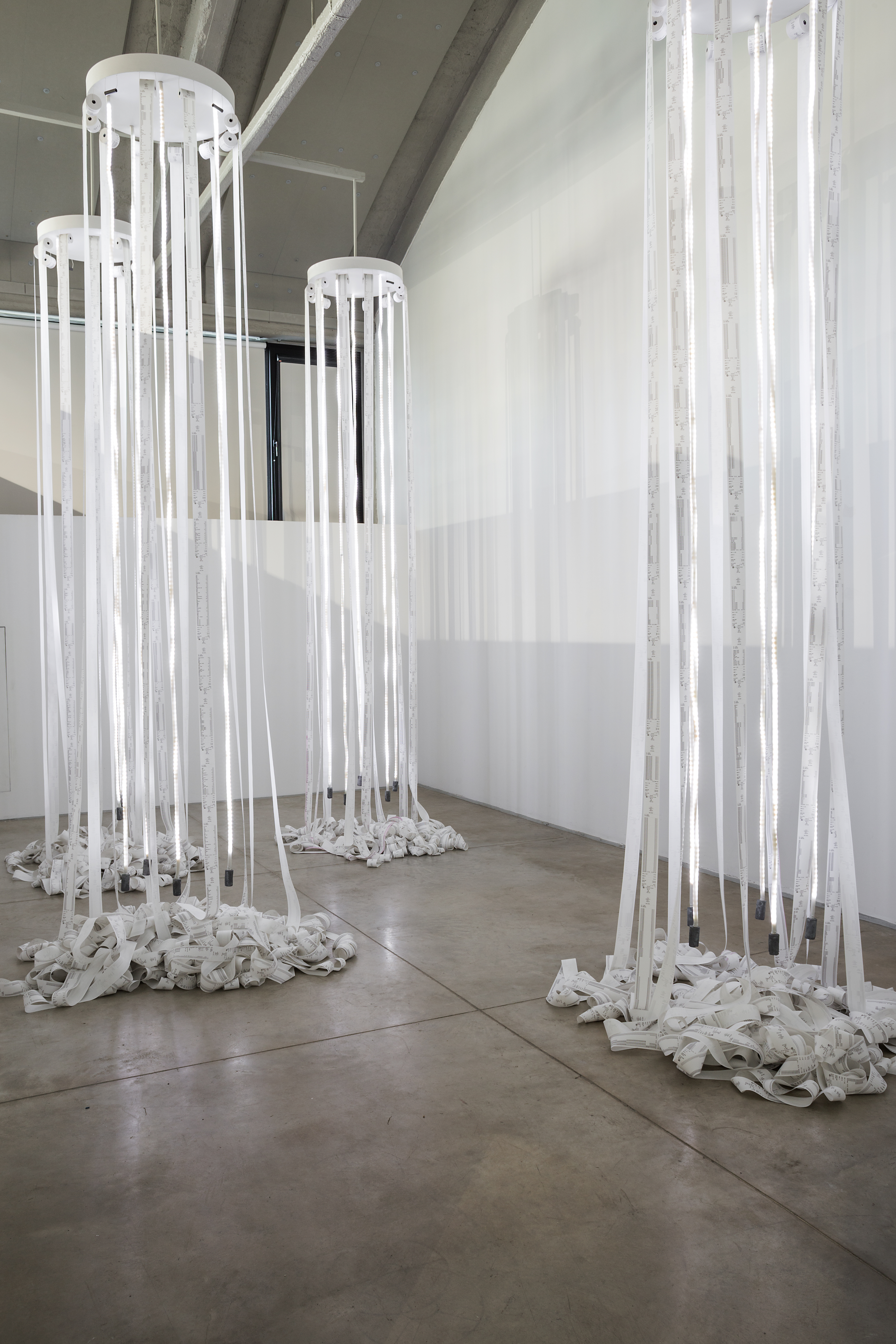

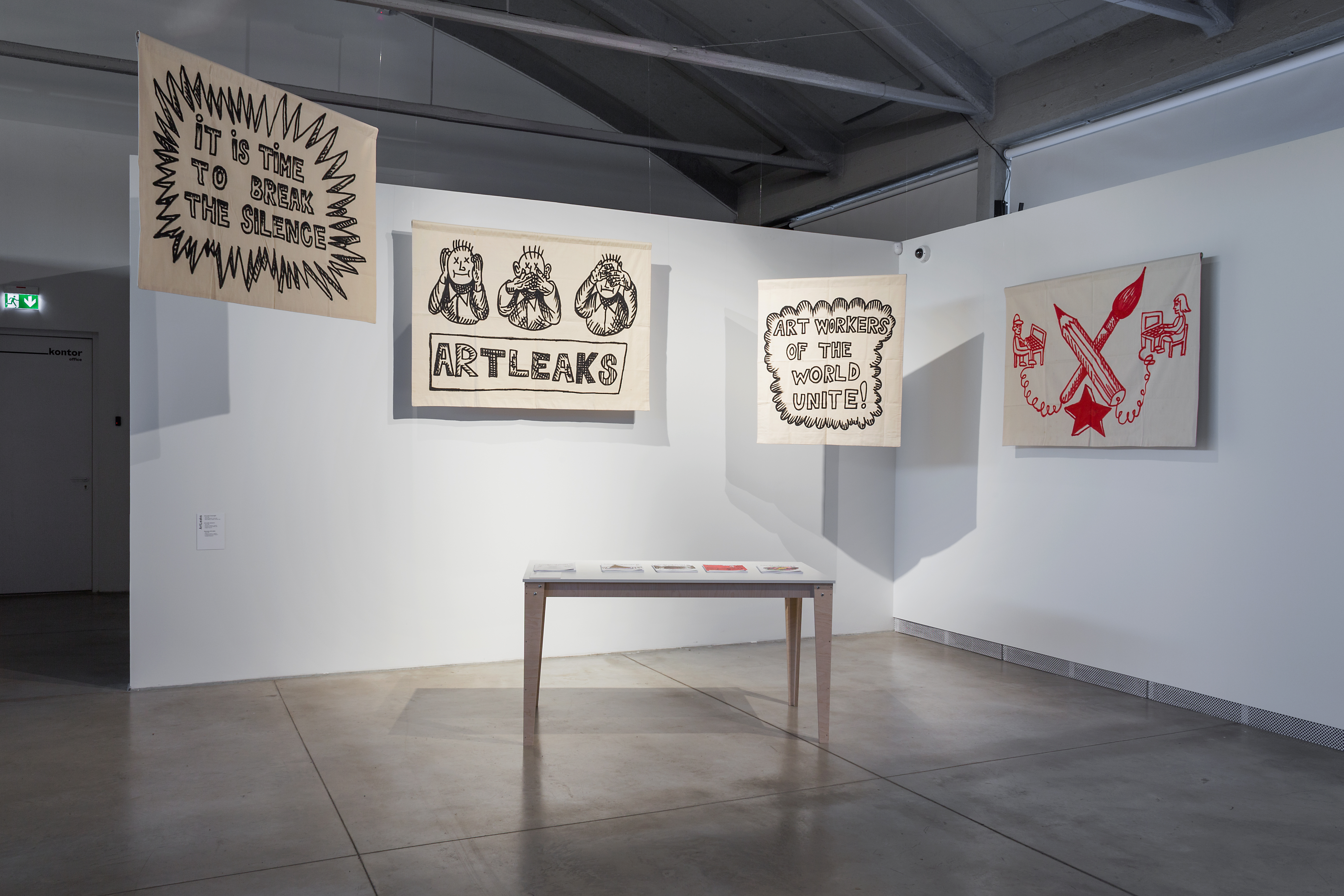
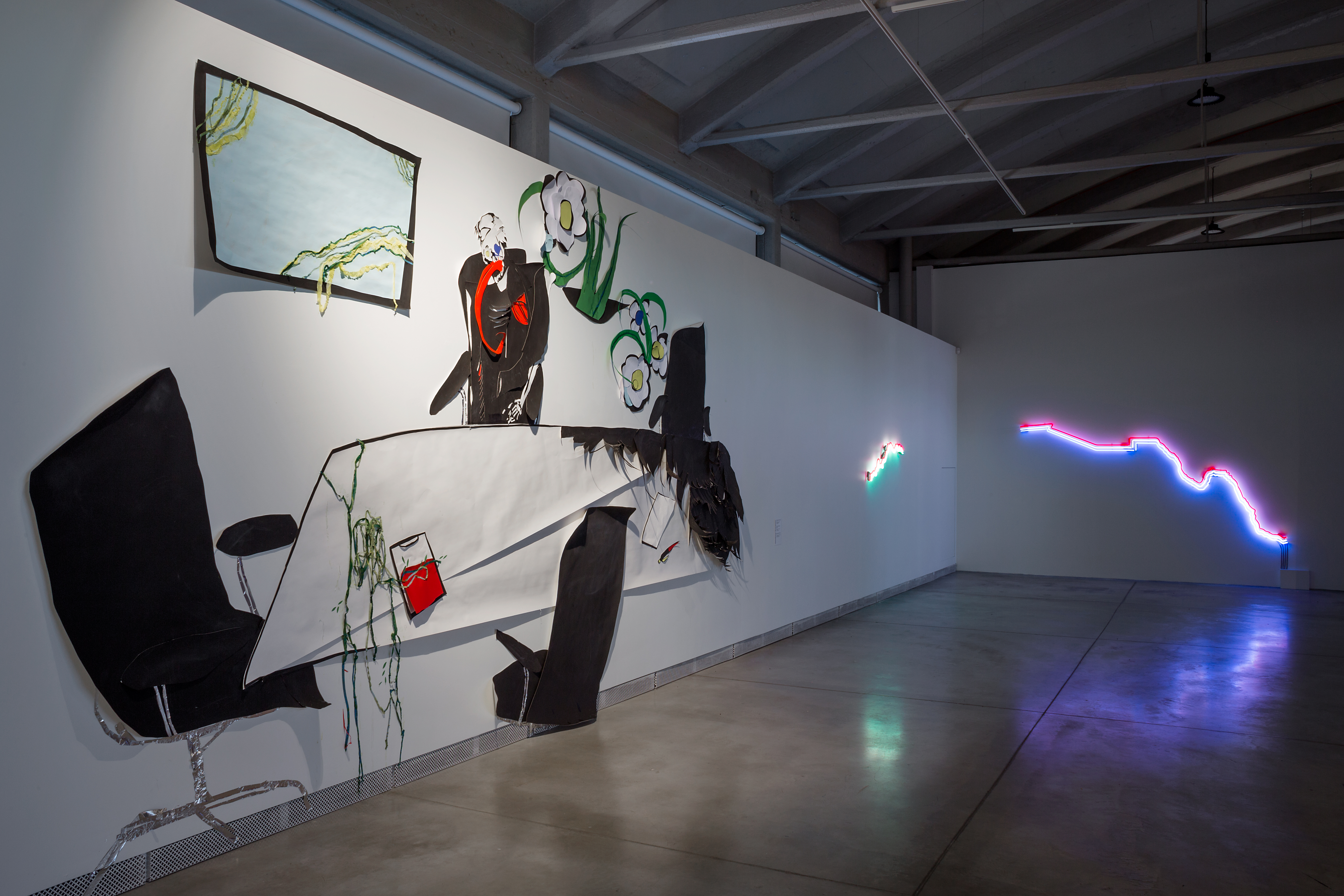
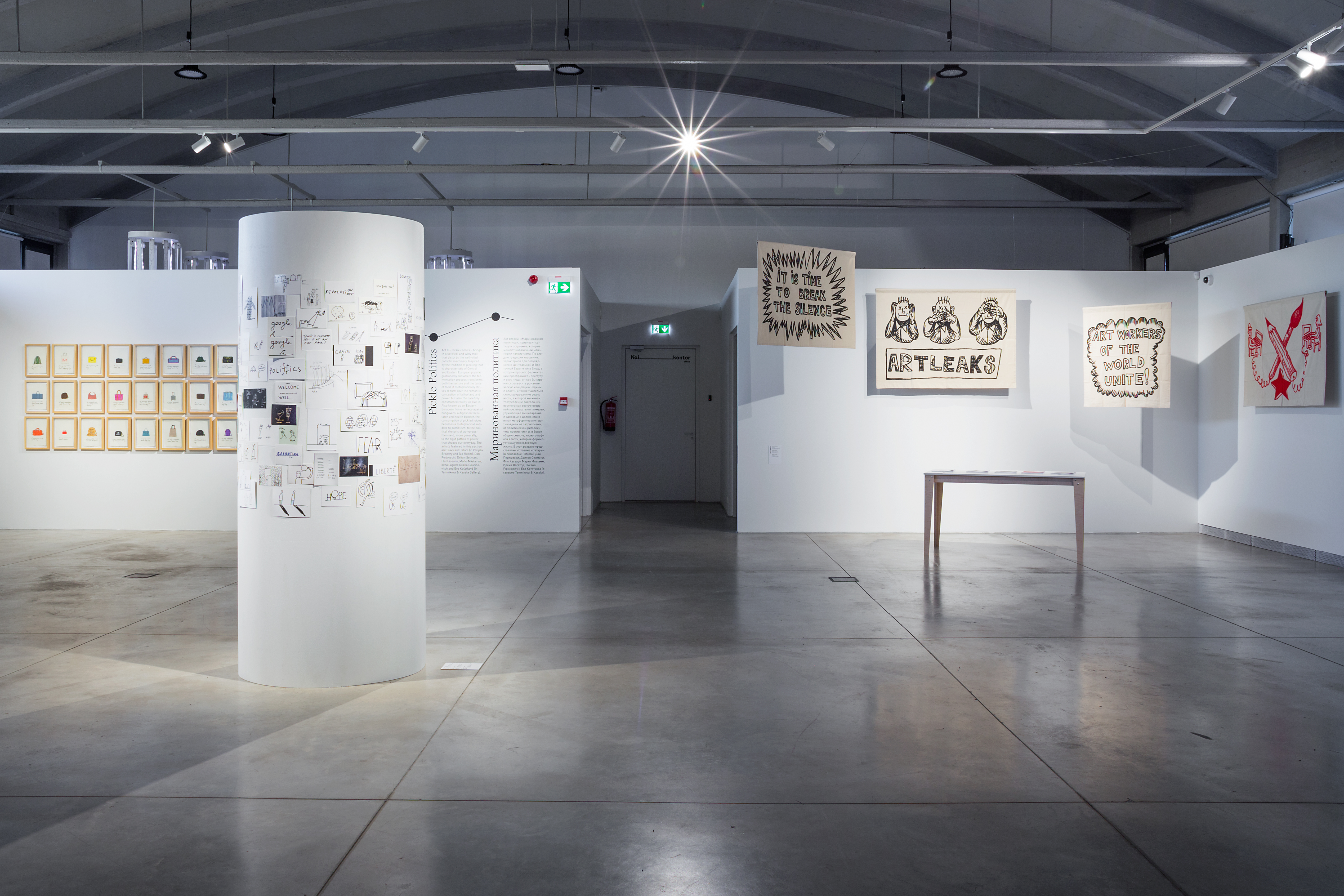
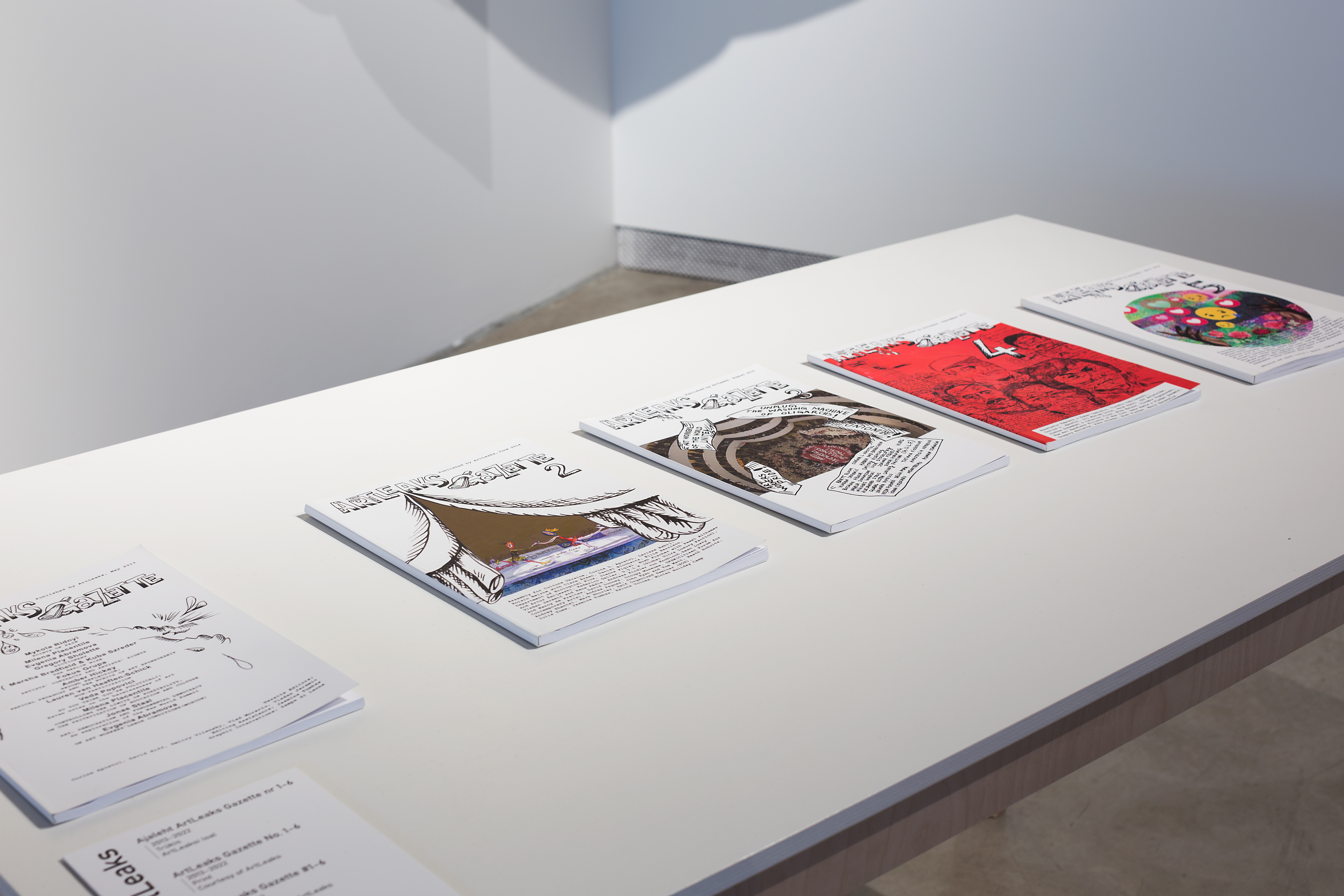
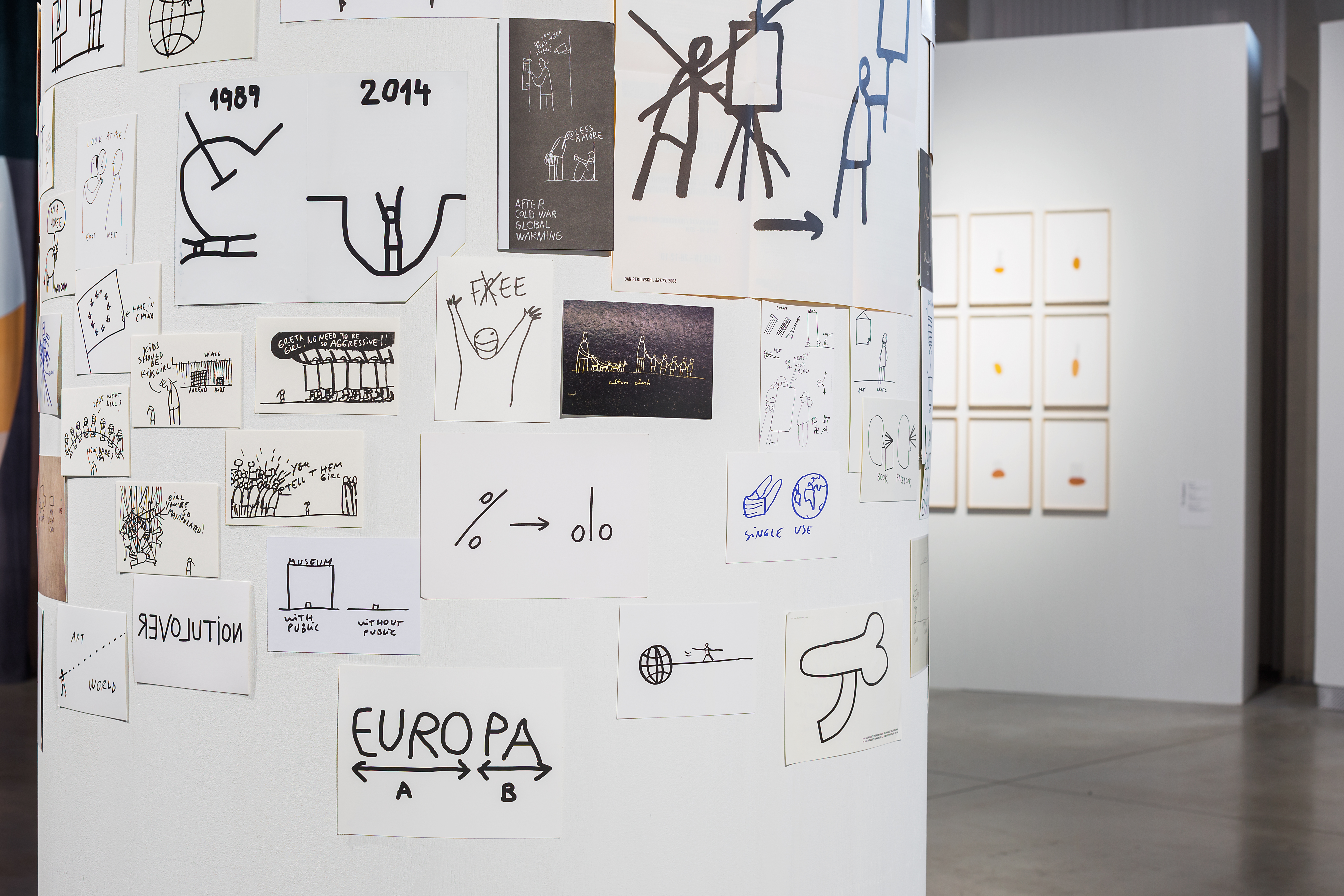
Artists: ArtLeaks (ArtLeaks artistic activities and the editorial of the ArtLeaks Gazette #6 are orchestrated by Corina L. Apostol, Rena Rädle and Vladan Jeremić) | Jasmina Cibic | Hubert Czerepok | Agnes Denes | Igor Eškinja | Oxana Gourinovitch | Ferenc Gróf | Flo Kasearu | Eva Koťátková | Volodymyr Kuznetsov | Irena Lagator | Olson Lamaj | Marko Mäetamm | Alexander Manuiloff | Dóra Maurer | Raul Meel | Katja Novitskova | Dan Perjovschi | Géza Perneczky | Nada Prlja | Kaisa Puustak | Driton Selmani | Slavs and Tatars | Société Réaliste | Bojan Stojčić | Endre Tót
The first act entitled THE NATION LOVES IT addresses the general mechanisms of nation building, which is often carefully crafted and used by political powers. It explores the instrumentalisation of visual language and rhetoric in the implementation of a new political order and the construction of the State as a confusingly toxic spectacle. The works presented in this chapter also use and distort the tools of communication used by power structures (maps, emblems, signs, architectures) in order to identify how the patriotic spectacle specific to each new national discourse and apparatus is built. Pointing out the universal systems, priorities and reflexes that constitute these processes, this cycle intends to elaborate a toolkit for reading and deciphering the contemporary world. The artists exhibited in this section are Jasmina Cibic, Ferenc Gróf, Société Réaliste, Alexander Manuiloff, Volodymyr Kuznetsov, Hubert Czerepok and ArtLeaks (ArtLeaks artistic activities and the editorial of the ArtLeaks Gazette #6 are orchestrated by Corina L. Apostol, Rena Rädle and Vladan Jeremić).
Act II – PICKLE POLITICS – brings in a satirical and witty trait that disturbs the well-oiled patriotic machinery. Inspired by the tradition of pickling that is characteristic of Central and Eastern European popular gastronomy and where the fermentation process transforms both the texture and the taste of food, it metaphorically strives to turn sour the romantic conception of fatherland and power, but also the carefully constructed reality we live in. Also known as an Eastern European home remedy against hangovers, a digestion facilitator and health booster, the consumption of pickled juices becomes a metaphorical antidote to patriotism, to the political rhetoric of us-versus-them and, more generally, to the rigid pathos of power that shapes our everyday. Th artists featured in this section are Slavs and Tatars, Dan Perjovschi, Driton Selmani, Flo Kasearu, Marko Mäetamm, Irena Lagator, Oxana Gourinovitch and Eva Koťátková.
The third act entitled SCIENCE OF FREEDOM presents a variety of proposals to counteract the oppressing situations of present times by referring loosely to the natural sciences andbiological and mathematical systems that, sublimed [MH1] [A2] by imagination and given unknown forms, allow to visualise alternative ways to exist, perceive and behave. Humour, poetics and absurdity are the main conceptual pillars of this section and are employed to playfully divert or lyrically distort reality through the gentle negation of fixed roles or functions. In this newly created situation, instincts prevail over order and discipline, and make space for rethinking the unquestionable rules of our existence, imagining and demanding the impossible, and ultimately freeing ourselves from existing and imposed frames. The artists exhibited in this section are Olson Lamaj, Igor Eškinja, Flo Kasearu, Nada Prlja, Katja Novitskova and Bojan Stojčić.
As an echo from the recent past, the subchapter entitled SCIENCE OF FREEDOM – FUTURE ANTERIOR presents works with a similar approach from Hungarian and Estonian artists of the neo-avant-garde generation and first wave of conceptual art from the 1970s. As a dialogue unfolding in space and in time, these artworks exemplify how the power of imagination can beat alternative paths to social and individual freedom, and act as precious lessons for future generations. The artists featured in the subchapter are Agnes Denes, Géza Perneczky, Endre Tót, Dóra Maurer, Raul Meel and Kaisa Puustak.
[1] Joseph Beuys interviewed by William Furlong and Michael Newman at the Victoria and Albert Museum (1983).
[MH1]Unclear – I have not seen this word used as a verb before. Do you mean sublimated?
[A2]yes absolutely, thakn you!


